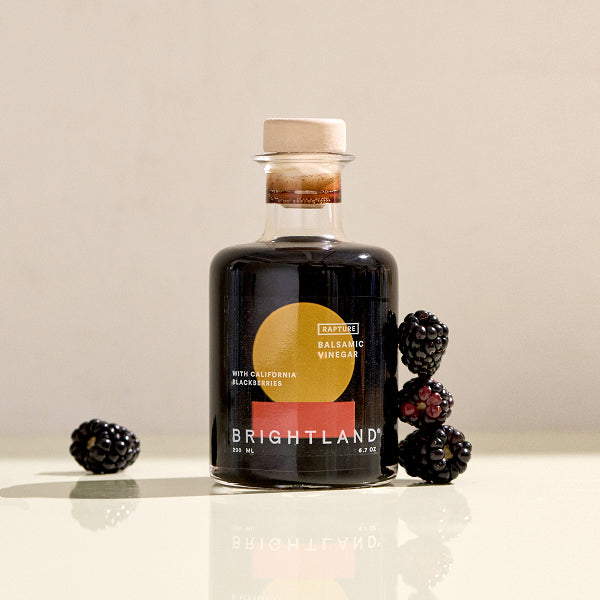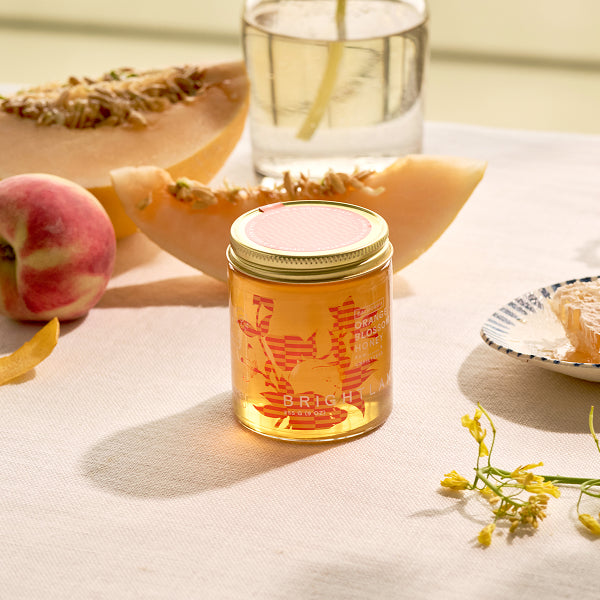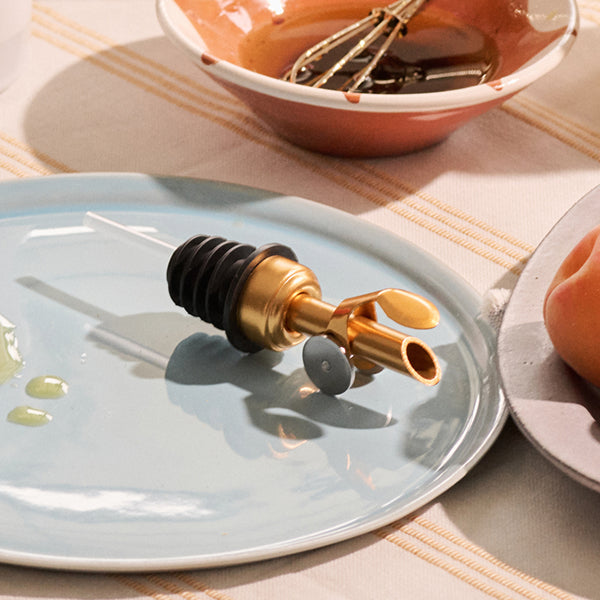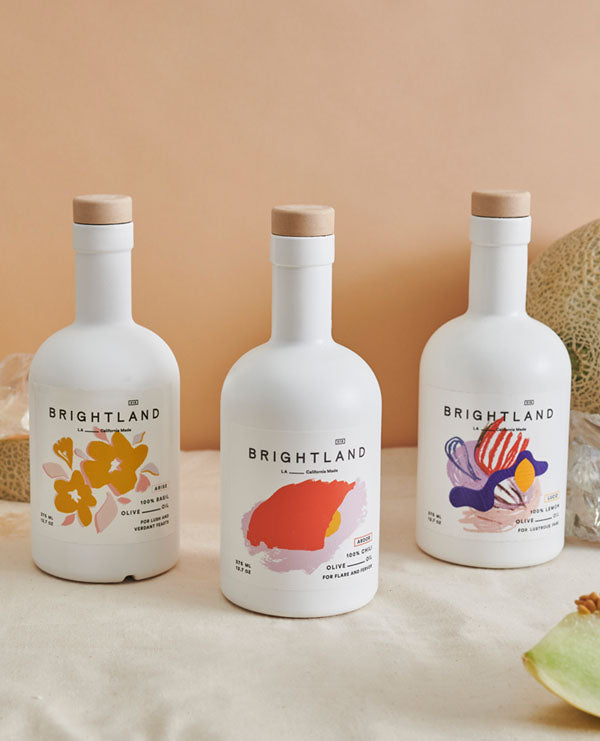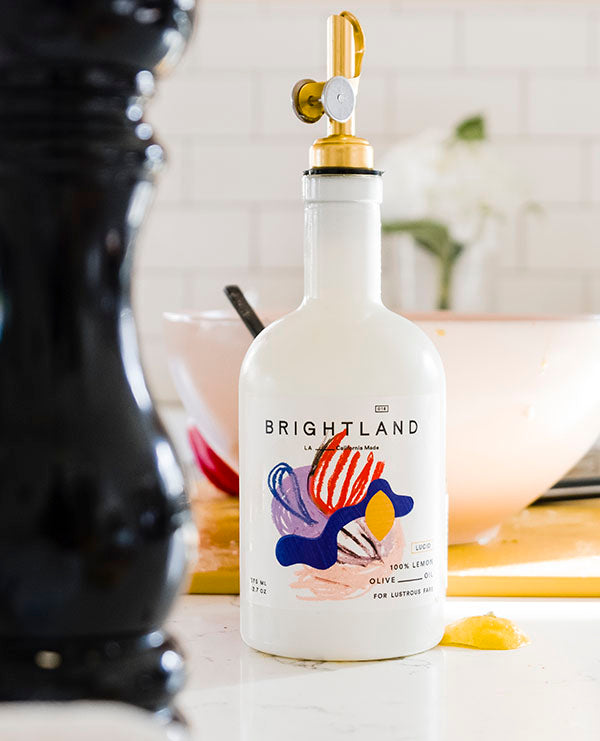
Tasting olive oil is both an art and a science, just like tasting wine, beer, whiskey, chocolate or anything else. You can hone your sensitivity to olive oil flavors with practice over time, but you need to do it the right way to get the most benefit out of your olive oil tastings. In this guide, we will walk you through each step of olive oil tastings, plus offer tips for pairing olive oil with food and for hosting your own olive oil tasting.
[close type="rte"][open type="rte"]
How to Taste Olive Oil
Ready to taste olive oil like a pro? Here is a simple guide to tasting olive oil:

- Get the olive oils you want to taste. If you are deliberately buying the oil in order to taste it, we recommend choosing small bottles that hail from different regions and are made using different olives. This will allow you to spot the differences between them and to broaden your olive oil palate.
- Choose your olive oil tasting vessel. The pros use special blue glass cups that look like votive candle holders. The blue glass disguises the color of the olive oil, which can unconsciously affect judgments. Select an opaque glass if you can, but if you do not have one on hand, a wine glass is just fine.
- Pour one to two tablespoons (15-20 milliliters) into the tasting vessel. Hold the glass in your left hand and cover the top with your right. This will warm up the olive oil, causing it to release more aromas.
- Gently swirl the glass around in order to coat the sides of the glass and further release aromas. Notice the viscosity (or lack thereof) of the oil. Be careful not to swirl it too vigorously, as you do not want to get it on your hands.
- Raise the glass to your nose and remove your hand that is covering it. Inhale the olive oil’s aromas with your nose, and make a note of what it smells like. Is it fruity? Bitter? Pungent? Something else?
- Take a small sip of the oil while inhaling, which will heighten the flavor even more. Make sure to sip enough oil to fully coat your tongue. Let the oil sit for just a moment, noting any flavors as you noted the aromas in the previous step.
- Close your mouth and breathe out through your nose to activate your retronasal perception. Because your mouth and nose connect together, this will open up new aromas and flavors.
- Swallow the oil, paying attention to what tastes and sensations that you feel on the way down. Pungency can be felt in the throat, similar to the spicy kick that chilis create when you eat them. That pungent, sharp feeling is actually caused by the antioxidant-rich polyphenols found in high quality olive oils. In certain olive oils, the pungency can actually be strong enough to trigger the coughing reflex. You may also notice some bitterness, which is a common note in olive oils, especially those made from younger, greener olives. Finally, look out for fruity notes, which also includes vegetable and herb tastes. The intersection of these three elements — pungency, bitterness and fruitiness – is what gives each olive oil its distinctive taste.
- If you want to, you may wish to make some tasting and aroma notes before moving onto the next olive oil.
- Clear out your palate with some water, either plain or sparkling, and some slices of Granny Smith apples, which is the traditional palate cleanser during pro olive oil tastings.
- When you feel ready, move on to the next olive oil.
Learn more about drinking olive oil and its potential health benefits in our guide.
[close type="rte"][open type="images" count="1"]

[close type="images"][open type="rte"]
How to Pair Olive Oil with Food
Once you have tasted olive oil on its own, it is time to start exploring how different olive oils pair with foods. The main thing you need to decide when pairing olive oil with food is whether you want the oil to complement or contrast the food. Complementing the food means that the olive oil does not overtake the dish, instead enhancing the existing flavors of the meat, vegetables or other ingredients. Contrasting the food means that the olive oil’s taste will come to the forefront, competing with the other elements for dominance. You will taste the olive oil very prominently.
Olive oil flavors can be broadly separated into three categories: low intensity (or delicate), medium intensity and robust. Delicate olive oil goes best with fish, chicken, eggs, tender greens and baked recipes where a stronger flavor would overwhelm the dish. Medium intensity olive oil is very versatile and goes well with white meat, salads, vegetables, pastas, dipping bread and more. (Our ALIVE olive oil is an example of a delicate-to-medium olive oil). Robust olive oil has the strongest taste and is best paired with red meat, aged cheese, hearty soups and stews and other spicy dishes that already have a strong taste on their own. Our AWAKE olive oil is a great option if you are looking for a robust olive oil.

Here is how to start experimenting with pairing olive oil to food:
- Gather at least three olive oils: a delicate one, a medium intensity one and a robust one. (Our olive oil set is a great place to start.) Follow the tasting steps above to sample them all on their own first so you can establish a baseline before adding food.
- Assemble a variety of foods with different flavors to pair with the various olive oils. Make sure that they are not too heavily seasoned so you can get a sense of how olive oil adds to them. Some suggestions include a white meat such as grilled chicken, a red meat such as steak, a loaf of bread for dipping, some salad greens, some cooked pasta, a mild soft cheese and a stronger hard cheese.
- Try each food in each of the three different olive oils, noting the way the oil complements or contrasts the food. Take a note of which pairings you enjoy and which you do not, as well as any that surprise you.
Continue to pay attention to how the olive oil complements or contrasts the food as you cook. You may find yourself changing which olive oil you reach for as your palate continues to mature and you continue to develop your olive oil tasting expertise.

[close type="images"][open type="rte"]
Myths Abouts Olive Oil Tastes
With olive oil being so popular, there are many myths circulating about its flavor. Here are some of the top myths about olive oil taste:
Myth: You can tell a lot about an olive oil from the color
There is actually a lot of variety in olive oil colors, just like there is a lot of variety in olives. As such, you cannot really tell anything about the flavor from the color. The only way to know how an olive oil will taste is to actually taste it, not just look at.
Myth: The darker the color, the stronger the flavor
As a corollary to the first myth, many people believe that a darker color automatically means a stronger tasting olive oil. While this idea is very appealing, it is simply not true. Light-colored olive oils can have a very robust taste, while dark-colored olive oils can have a very delicate taste.
Myth: All extra virgin olive oil looks and tastes a certain way
Many people believe that all extra virgin olive oil has a very robust taste and a dark, green-gold color. In truth, extra virgin olive oils come in all sorts of colors and flavors, and pretty much any olive oil flavor can be extra virgin as long as it meets certain quality standards.
Myth: Cooking olive oil destroys the flavor
Very high heat can reduce the flavor of olive oil. However, home cooking rarely achieves the very high temperatures needed to significantly reduce the flavor of olive oil. Quality olive oil has a naturally high smoke point of over 400F. You may notice a small change in the flavor, but it will not be significant enough to hugely alter the taste of the dish.
Myth: Olive oil tastes better with age, like wine
While an olive oil tasting may resemble a wine tasting in some ways, olive oil does not get better with age, unlike wine. Olive oil tastes best within 18 to 24 months of harvesting when stored properly – and the fresher, the better.

Myth: A bitter taste means the olive oil has gone rancid
Bitterness is actually one of the positive attributes of an olive oil’s flavor, alongside pungency and fruitiness. If an olive oil tastes bitter, that is actually a sign that it is fresh. Rancid olive oil tastes gluey, waxy or crayon-like, not bitter. If you do not like the bitter taste of certain olive oils, then you can seek out other varieties that are more fruity or more pungent rather than bitter.
Myth: Olive oil from Italy tastes the best
Most people have a clear mental association between olive oil and Italy, but Italy is not even the world’s greatest producer of olive oil: Spain is. While Italy does produce great tasting olive oil, so do many other countries, including the United States – most particularly, California.
[close type="rte"][open type="images" count="1"]

[close type="images"][open type="rte"]
How to Host an Olive Oil Tasting
Hosting an olive oil tasting for your friends is a fun twist on the usual wine or beer tasting. Here is what you need to do to in order to host a successful olive oil tasting party:
- Ask each of your friends to bring a bottle of olive oil to the party. You may wish to assign them broad flavor categories (e.g., delicate, medium or robust) so you do not end up with a bunch of olive oils that all taste similar. Try to aim for a mix of regions as well so you will all be able to sample the full breadth of olive oils. You might also want them to bring flavored olive oils to further broaden the selection.
- Procure enough tasting vessels for the entire party. Ideally, they should be opaque to disguise the color of the olive oil.
- Get a sample of foods together that you can pair with the various olive oils. Like we outlined in the food pairing section, you will want a variety of flavors to complement and contrast the olive oil.
- Make sure that you also have water (either plain or sparkling) and Granny Smith apple slices so that people can cleanse their palates as needed.
- If you want to turn it into a guessing game, you can cover the labels on the bottles with opaque paper and have people guess which olive oil they are tasting. If not, you can just leave the bottles out on the table and review the details on the labels as you sample each one. Pay attention to the region that each olive oil comes from as well as what olives were used to make it.
- Teach everyone at the party how to properly taste olive oil using the steps we outlined in the “tasting” section earlier.
- Enjoy your tasting party!
At Brightland, we create each of our olive oils to taste delicious yet distinct. We make all of our olive oils from the highest quality California olives and carefully oversee every step of the process to ensure that our customers get excellent extra virgin olive oil every time. Shop with us today.
[close type="rte"]



